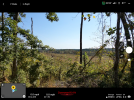LoudThunder
Part 107 Licensed
Wow, Cool!!! How high will the sensors provide feedback before they don't issue this notice? How responsive is the warnings. Is it responsive enough to use while flying?With the Mini 3 Pro yes that will be being displayed by DJI Fly.
For example, One of the areas that I fly in has a gentle uphill rise, perhaps two feet per 100'. Before I realized this the first time, I was flying there at about 5' AGL and did not realize that the ground had this gentle rise and due to the play of the shadows on the ground I did not realize that I was about to clip grass. Luckily I did notice the screen was practically all grass and stopped before I turned my little bird into lawn shears…
Finally, do the sensors work over water as I believe that is what started this thread…











